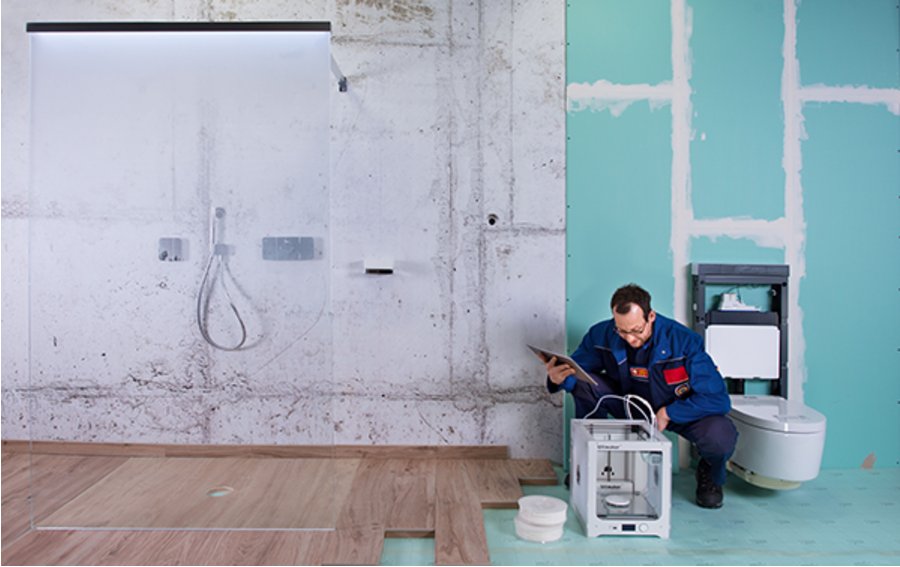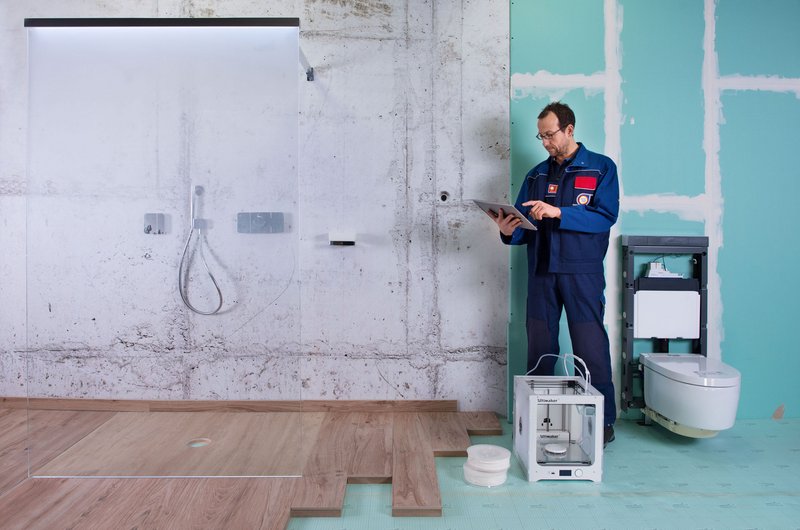Innovative Bathroom: Ready for a smart revolution

Photo and background: Karsten Jipp
Besides current and realistically feasible trends, the industry is of course venturing a look at the future of the bathroom as well. And precisely because of all the technical and technological innovations, that future looks set to focus a great deal more on its human users. Decoupling the products from the pipe system, for instance, and their resulting architectural liberation from the wall, could provide interior design with some totally new approaches for planning snug and cosy bathrooms. A shower toilet linked to the internet could even evolve into a discreet health centre that uses sensors to collect the most important health data and send it straight to the doctor – a safety net not just for the elderly but for younger people with chronic ailments too. And applications like in-floor sensor systems that control the lighting and sound the alarm if somebody falls can already be installed in bathrooms.
Nowadays, the look and feel of many different materials often imitate all the elements that can potentially be found in interior design – be it in the form of wood, concrete or metal effects. And the long-rejected idea of wood in the bathroom is now being boldly taken up again with new all-wood bathroom furniture. Thanks to innovative, water-resistant parquet or PVC systems and wood-look tiles, the theme can be echoed throughout the room, and even shower trays can be printed to match the effect chosen for the tiles. The new Subway Infinity shower tray collection from Villeroy & Boch is a case in point: besides combining a wide variety of models with plenty of scope for individual creative freedom, the ceramic shower tray can be cut to size to fit even the most awkward of spaces. And thanks to the innovative ViPrint decors, it can be printed to match selected tile collections from the company as well. The OnLaser glass showers of the Letizia series from shower enclosure specialist glassdouche bring an entire forest into the bathroom; as the name suggests, the designs are lasered rather than printed onto the glass, making them more hardwearing and clearly visible even in dim light. Hansgrohe’s interactive Axor One control module for the shower brings the controls for several spray functions and the water settings together in a single element and is extremely easy and intuitive to use.
Individualism also plays a key role in the Squaro Edge 12 bathtub collection from Villeroy & Boch . Designer Gesa Hansen developed a new colour concept inspired by the changing seasons in Paris. More than 200 harmonious apron colours open up a broad spectrum of design options and provide a highly individual tub enclosure that is even available in customised colours on request.
As for the size of the bathroom, it looks as if it will develop in two different directions: while detached and semi-detached houses are tending to allocate more space to their renovated or newly built bathrooms and are increasingly likely to have a second or guest bathroom, we can also expect a focus on smaller but highly functional and top-quality spaces, especially in urban settings. The sanitary industry is developing a growing number of space-saving products for such layouts with the aim of providing a wide range of usage options and as much storage space as possible.
There are also new concepts for jointly used and thus semi-public baths that are being tested in pilot projects; in future, they could enhance the attractiveness of new housing developments for exclusive user communities in conurbations. The sector is also discussing totally new space and site concepts, e.g. for the wellness segment, where new forms of bathing culture could establish themselves along Scandinavian lines. And last but not least, the arrival of fitness in the bathroom could well herald the start of another trend that goes far beyond the conventional functions usually associated with a bathroom.
It seems as if the development of market-ready products and installation elements produced by 3D printing is only a matter of time. The sanitary sector offers a broad field of applications, and American Standard has already taken the first steps in this direction: the housing of the DXV fittings series was 3D-printed in metal and functions in its assembled state. For the time being, it still takes about 24 hours to print and the rough surface requires additional finishing. Nevertheless, it seems reasonable to assume that 3D printing technology will continue to improve and become less limited in terms of the size of the items it can produce, eventually making it a viable mass production process. As a result, it will not only be easy to replicate spare parts using the manufacturers’ original files; it will also be possible to print smaller accessories or fittings on the basis of model files or one’s own ideas.
